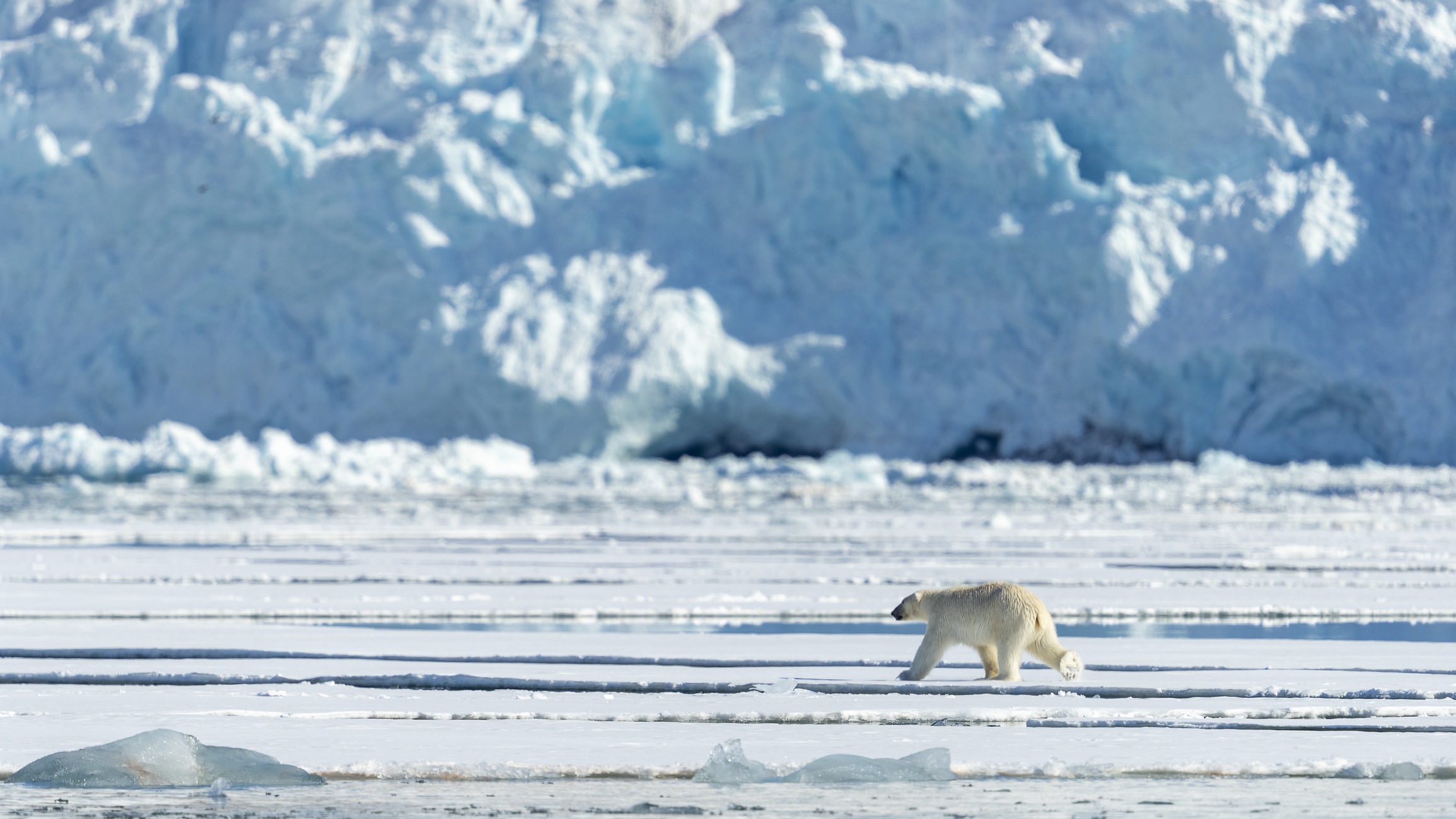TOPLINE
A new scientific study offers the first-ever estimates of how many polar bear cubs die because of greenhouse gas emissions—something experts hope will allow the federal government to use the Endangered Species Act to regulate individual projects for their greenhouse gas emissions.
KEY FACTS
The study by researchers with Polar Bears International, published Thursday in the academic journal Science, explains that polar bears’ survival is heavily dependent on sea ice concentration, because when that sea ice melts, polar bears are forced onto land, where food is less abundant and they are forced to fast for long periods of time.
Polar bears are normally able to fast for long periods of time and survive, but the study says sea ice melting is forcing them to fast for even longer than typical.
The longer they fast, the more weight they lose—nearly a kilogram of body mass each day—and this makes mother bears less able to care for and provide milk for their cubs, which makes cubs less likely to survive into adulthood.
As less cubs survive into adulthood, the species grows closer to extinction.
This study, researchers say, was able to quantify just how much each individual greenhouse-gas emitting project contributes to that sea ice melting and thus contributes to the extinction of polar bears—though the rate at which greenhouse gas emissions contribute to polar bear extinction varies by the region in which those polar bears live, as there are 12 distinct subpopulations of polar bears, each living in a different eco-region.
For example, the study found that 24.1 gigatons of carbon dioxide (a greenhouse gas) emissions will decrease the amount of polar bears that survive into adulthood by 2.7% in the Chukchi Sea subpopulation and by 0.6% in the West Hudson Bay subpopulation.
KEY BACKGROUND
In 2008, after projections showed that two thirds of the world’s polar bears could die by the middle of the 21st century, polar bears became the first animal to be listed as a protected species under the Endangered Species Act as a result of human-caused climate change. Section Seven of the Endangered Species Act establishes a process with which the Department of the Interior must ensure projects they fund or authorize do not further jeopardize the survival of listed endangered species like polar bears. However, in October 2008, then Solicitor of the Department of the Interior David Bernhardt issued a legal opinion declaring Section Seven considerations wouldn’t be required unless one could differentiate the effects of greenhouse gas emissions of specific projects from the total greenhouse gas emissions created by humans since the start of the Industrial Revolution. This made it impossible for the Department of the Interior to evaluate projects based on how their greenhouse gas emissions would contribute to the death of endangered species, because the department previously had no way to establish one specific project’s impact separate from all the other greenhouse gas-emitting projects in the world. However, the researchers at nonprofit Polar Bears International believe this study has finally discovered how to do that. This study, the researchers argue, provides the scientific basis to rescind Bernhardt’s memo and begin including consideration of greenhouse gas emissions in reviews of all new projects.
TANGENT
The researchers behind this paper said that they focused on polar bears because Bernhardt’s memo was created in response to polar bears being listed under the Endangered Species Act. However, they said their findings can be extended to other endangered species. For example, they believe with more research, scientists would be able to establish a similar direct link between individual greenhouse-gas-emitting projects and the survival of marine turtles.
FURTHER READING
Unlock the Endangered Species Act to address GHG emissions (Nature)
